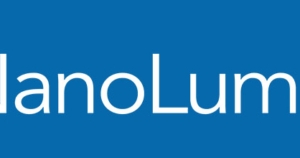Advertisers and transportation hubs can now bring full color advertisements, marketing and safety information to passersby, travelers and visitors.
ATLANTA, GEORGIA, January 29, 2018 — Nanolumens, award-winning creators of uniquely compelling interactive LED visualization solutions, today announced that its patented Nixel™ technology is the first LED display technology to meet certain specific European Rail safety standards for heat release rate, smoke density, flame spread and toxicity. According to Nanolumens CEO Rick Cope the certification comes at a time when the company is expanding its footprint in the transportation industry.
“For LED displays to become a mainstay in the transportation industry, it’s critical that the technology meets relevant safety and reliability standards,” Cope said today. “I am very proud to announce that Nanolumens has taken the lead in this regard and is, in fact, the first LED display manufacturer to pass the rigorous European Rail safety standards. We continue to work with third-party firms to meet other standards for safety and reliability and we expect to make additional announcements shortly.”
According to Cope, advertisers and transportation hubs can now bring full color advertisements, marketing and safety information to passersby, travelers and visitors. “The brilliantly engaging qualities of direct-view LED displays is now a practical reality for every transportation center everywhere,” he stressed.
Regarding fire hazard performance for transportation environments, Nanolumens meets the following European Rail safety standards: EN45545-2 (ISO 5660-1) for Heat Release Rate, EN45545-2 (ISO 5659-2) for Smoke Density, EN45545-2 (ISO 5658-2) for Flame Spread, and EN45545 Annex C for Toxicity.
“Confirmed by ILAC accredited labs, the successful testing of Nanolumens fire performance Nixels is an exciting development that further differentiates us in an industry where our display solutions are already far ahead of the curve. We look forward to partnering with transportation organizations to create safer and more efficient transit experiences,” Cope said.

